I’ve been having an issue with water ingress under my shed. It’s a 6m x 5m wooden garage, sitting on a concrete base that extends about 200mm past the edge of the shed on all sides. The shed walls sit on pressure-treated bearers, which are wrapped in DPC on three sides.
Initially, I assumed the problem was water hitting the base, so I added a sloped concrete cap to direct water away from the shed. Unfortunately, this hasn’t really helped. It’s very wet and windy where the shed is (Scottish Highlands), so I’m now realising that most of the water ingress seems to be coming from water running down the shed walls then creeping between the bearers and the concrete, as well as between the bearers and the shed walls.
I tried sealing it with Sikaflex construction sealant (in the middle of the night – during a rainstorm, which is my excuse for why it looks hideous), but that didn’t work either. So, I’m looking for advice on how to fix it properly once and for all. (Also, interested/embarrassed to find out how many layers of idiocy I’ve added to this situation)
Initially, I assumed the problem was water hitting the base, so I added a sloped concrete cap to direct water away from the shed. Unfortunately, this hasn’t really helped. It’s very wet and windy where the shed is (Scottish Highlands), so I’m now realising that most of the water ingress seems to be coming from water running down the shed walls then creeping between the bearers and the concrete, as well as between the bearers and the shed walls.
I tried sealing it with Sikaflex construction sealant (in the middle of the night – during a rainstorm, which is my excuse for why it looks hideous), but that didn’t work either. So, I’m looking for advice on how to fix it properly once and for all. (Also, interested/embarrassed to find out how many layers of idiocy I’ve added to this situation)
Attachments
-
 water ingress 1.jpg667.1 KB · Views: 119
water ingress 1.jpg667.1 KB · Views: 119 -
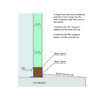 water ingress 2.jpg682.4 KB · Views: 109
water ingress 2.jpg682.4 KB · Views: 109 -
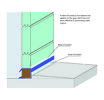 water ingress 3.jpg704.5 KB · Views: 92
water ingress 3.jpg704.5 KB · Views: 92 -
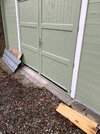 water ingress exterior - double door.JPG498.5 KB · Views: 99
water ingress exterior - double door.JPG498.5 KB · Views: 99 -
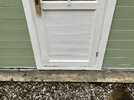 water ingress exterior - side door.JPG437.7 KB · Views: 97
water ingress exterior - side door.JPG437.7 KB · Views: 97 -
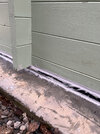 water ingress exterior.JPG534.8 KB · Views: 92
water ingress exterior.JPG534.8 KB · Views: 92 -
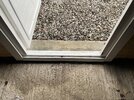 water ingress interior - side door.JPG639.6 KB · Views: 90
water ingress interior - side door.JPG639.6 KB · Views: 90 -
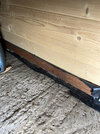 water ingress interior.JPG643 KB · Views: 111
water ingress interior.JPG643 KB · Views: 111


